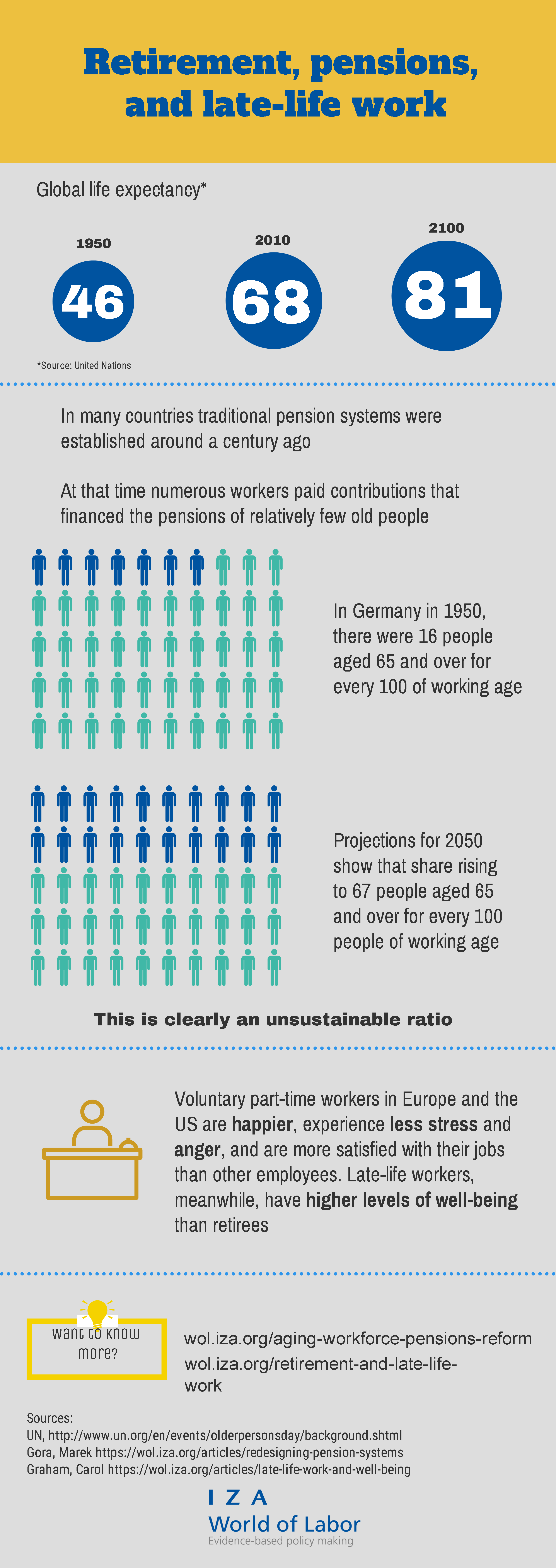At a Glance: Pensions, retirement, and late-life working

People are living longer than ever before; they are also working longer as governments extend state pension ages to reflect society. According to the UN, global life expectancy is expected to reach 81 by the end of the century. In 2050, for the first time in human history there will be more persons over 60 than children in the world.
Here is a selection of our evidence-based articles which cover some of the key issues affecting the aging workforce and retirement.
What is the future for pensions?
Author: Marek Góra
For decades, pension systems were based on the rising revenue generated by an expanding population (demographic dividend). As changes in fertility and longevity created new population structures, however, the dividend disappeared, but pension systems failed to adapt. They are kept solvent by increasing redistributions from the shrinking working-age population to retirees. A simple and transparent structure and individualization of pension system participation are the key preconditions for an intergenerationally just old-age security system.
Read the full article
What options are there for older workers?
Author: Carol Graham
Flexible work time and retirement options are a potential solution for the challenges of unemployment, aging populations, and unsustainable pensions systems around the world. Voluntary part-time workers in Europe and the US are happier, experience less stress and anger, and are more satisfied with their jobs than other employees. Late-life workers, meanwhile, have higher levels of well-being than retirees. The feasibility of a policy that is based on more flexible work arrangements will vary across economies and sectors, but the ongoing debate about these multi-tiered challenges should at least consider such arrangements.
Read the full article
Japan: a role model for aging societies across the globe?
Authors: Daiji Kawaguchi, Hiroaki Mori
As the third largest economy in the world and a precursor of global trends in population aging, Japan’s recent experiences provide important lessons regarding how demographic shifts affect the labor market and individuals’ economic well-being. On the whole, the labor market has shown a remarkable stability during the recent financial crisis, despite decades of economic stagnation and sluggish real wage growth. Rapid population aging, however, has brought substantial changes to individuals in the labor market, most notably among women, by augmenting labor demand in the healthcare services industry.
Read the full article
For further information
Get directly in touch with Carol Graham or one of our other topic spokespeople